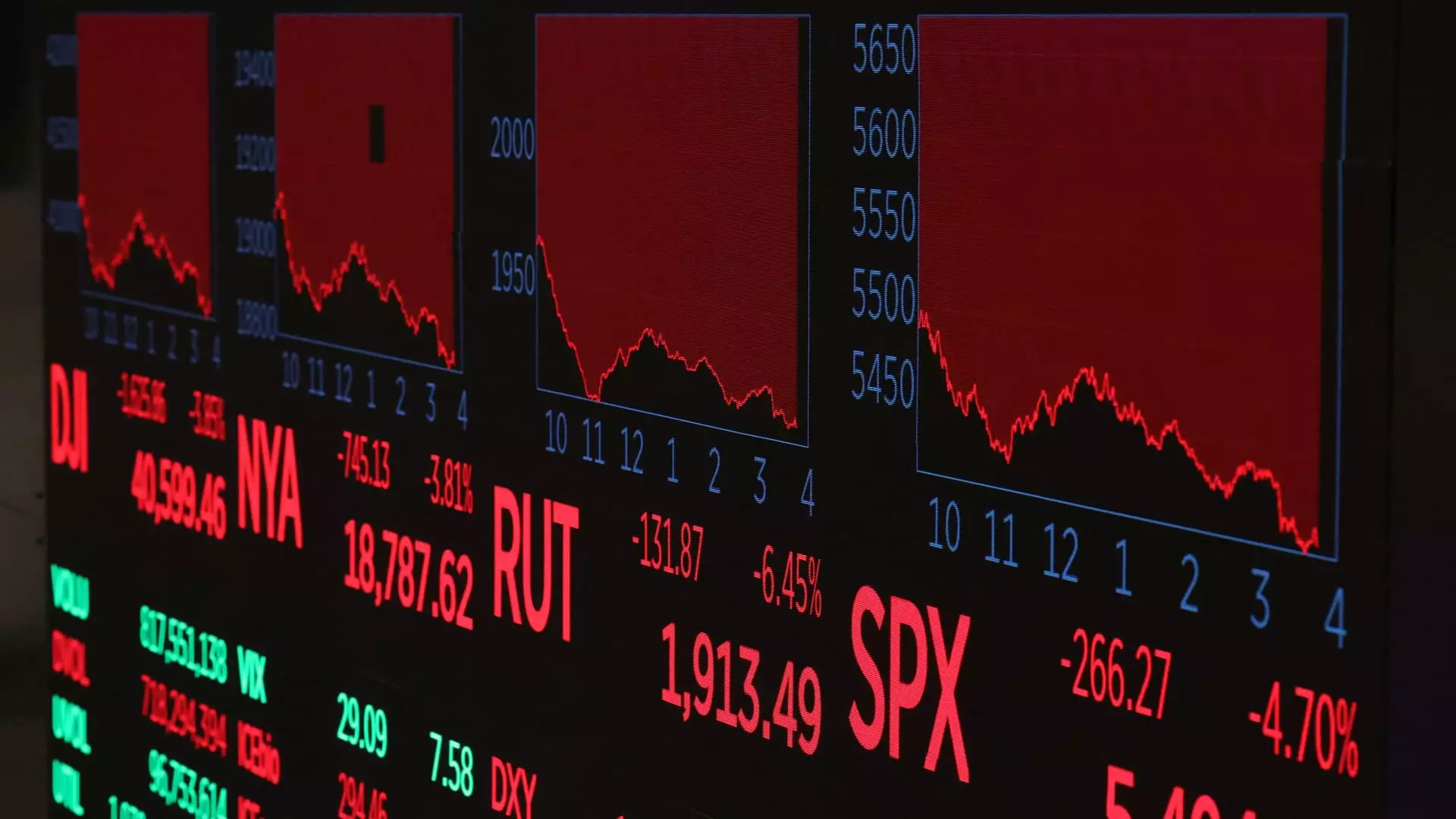The recent stock market upheaval provoked by perceived upheavals in government policy has instigated a wave of volatility, with many seasoned Wall Street veterans buzzing with anxiety. Yet, contrary to this prevailing narrative of fear, a fresh cohort of retail investors is entering the fray, undeterred by uncertainty. One such investor, Rachel Hazit, turned a moment of market decline into a strategic opportunity, acquiring shares from well-regarded exchange-traded funds (ETFs) such as Vanguard’s S&P 500 ETF.
Their approach exemplifies a growing trend among everyday traders, who are not only embracing market fluctuations but actively seeking out buying opportunities when prices drop. This audacity stands in stark contrast to the hesitant posture of institutional investors, many of whom have already pulled back amid fears of broader economic implications stemming from erratic presidential policy decisions. The notion that the retail investor has become a formidable force, even in bearish times, is both impressive and somewhat troubling.
The ‘Buy the Dip’ Mentality
The axiom of “buying the dip” has found renewed energy among retail investors, even as the Dow Jones and S&P 500 indices faced steep declines. In fact, April witnessed historic inflows into the stock market, with data showing that retail investors funneled a staggering $8.8 billion into equities between the fall of the S&P and the subsequent recovery phases. This behavior encapsulates the principle that investors see down markets not as signals to panic, but rather as invitations to acquire undervalued assets.
Amid such a backdrop, many new entrants in the market are seemingly guided by an optimistic belief in long-term gains, casting aside fears of immediate economic woes fueled by tariffs or inflation. They choose to see declines in stock values as opportunities to accumulate, displaying a remarkable level of resolve and an audacity that bucks conventional investor wisdom, often associated with well-timed exits from perilous situations.
The Disruption of Conventional Wisdom
In examining the investing climate, it becomes clear that today’s retail investors don’t conform to the archetype of risk-averse individuals who bail at the first sign of turbulence. Instead, they find camaraderie in online trading forums and social media where insights, guidance, and encouragement flow freely. Pioneers of wealth-building strategies are advocating for buying during downturns; influencers encourage individuals to see market tumult as a precursor for long-term wealth accumulation. Tori Dunlap’s assertion that “millionaires are made during market downturns” resonates deeply, tirelessly inspiring a choir of retail traders unfazed by external economic indicators.
This burgeoning community poses a challenge to traditional investment models and serves as a poignant reminder that collective sentiment can indeed govern market dynamics. The success of this collective could redefine how we perceive the retail investor, showing that they no longer remain at the mercy of institutional narratives but are actively shaping market sentiment.
The Risks of Recklessness
Despite the positive trend among retail investors, it is paramount to remain cautious. Greater exposure to market risks, particularly amidst unpredictable policy shifts and inflationary fears, may evoke concerns regarding the sustainability of such bullish behavior. As the CBOE Volatility Index peeks, capturing sentiments of fear and uncertainty, savvy retail traders are left teetering on the line between courage and recklessness.
A significant portion of the retail investment concentration in technical giants such as Nvidia—drawing six out of seven dollars directed toward individual stocks—sheds light on a trend that bears watching. Are these investors wise in their assumption that historically strong tech stocks will continue to outperform during uncertain times, or have they succumbed to over-speculation driven by euphoria? These are questions that must be answered as retail investors increasingly dictate market trends.
A Hidden Cost to the New Optimism
Even while they seize opportunities in the market, many in this cohort express muted concern about the larger economic implications of their decisions. Rachel Hazit herself articulates a nuanced truth: while she is investing amid turmoil, she is also cognizant of the looming threats that could undermine her purchasing power. The delicate balance between aggressive trading and cautious living underscores a broader undercurrent of anxiety, amplifying the tension between immediate gains and long-term economic stability.
Investors like Hazit serve as a reminder that even while profitability reigns supreme in this industrious pursuit, macroeconomic factors always play a silent role in hindering individual wealth-building endeavors. Striking a judicious balance between seizing opportunities and preparing for downturns may very well be the mantra for this new generation of retail traders.
The landscape is shifting. Retail investors are refuting traditional cautious approaches, forging ahead with boldness. The path may be fraught with risk, but it also holds the promise of new possibilities; the virtues of outrageous optimism and calculated risk-taking are finding members who will hold strong in pursuit of long-term wealth.

